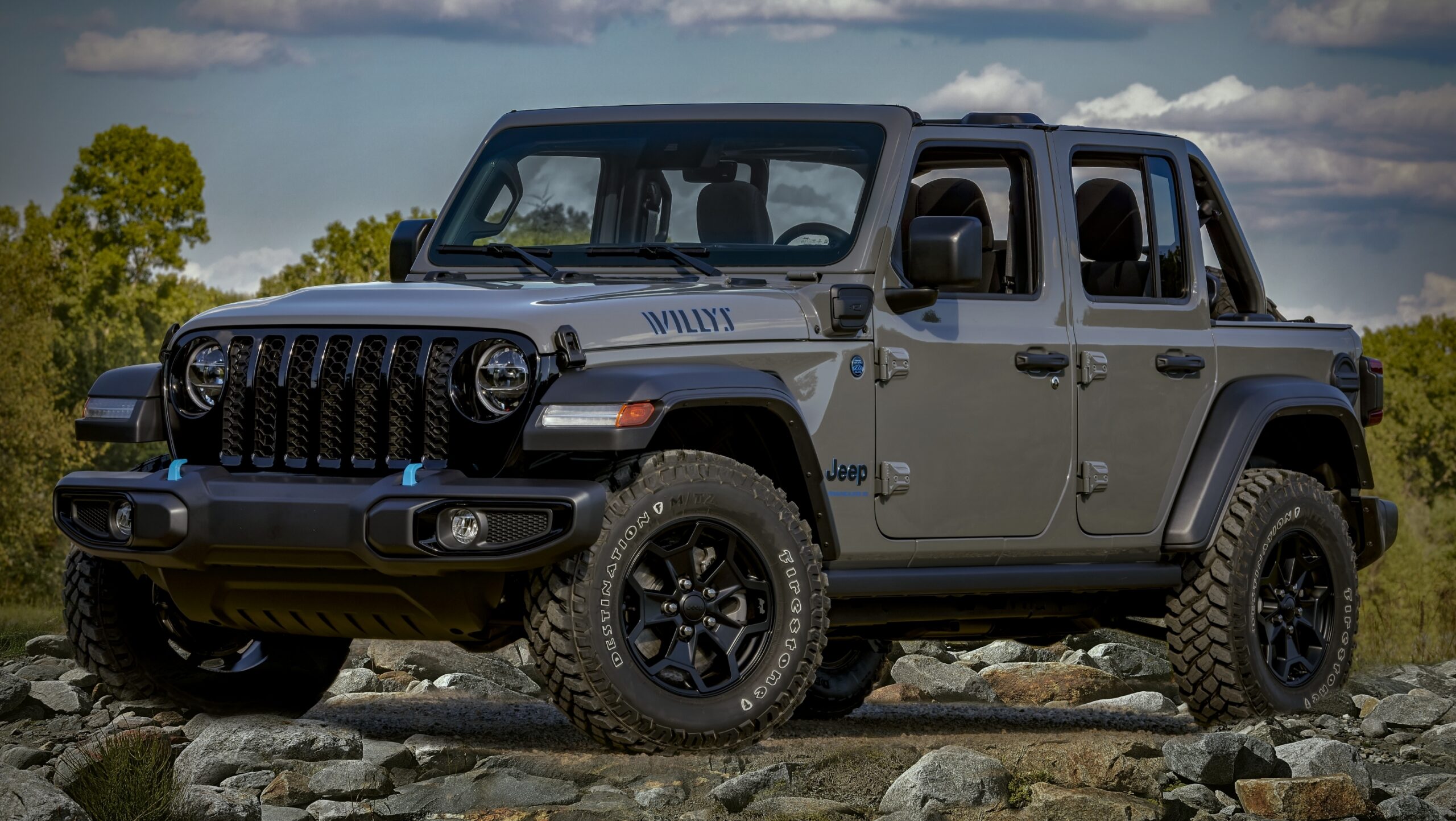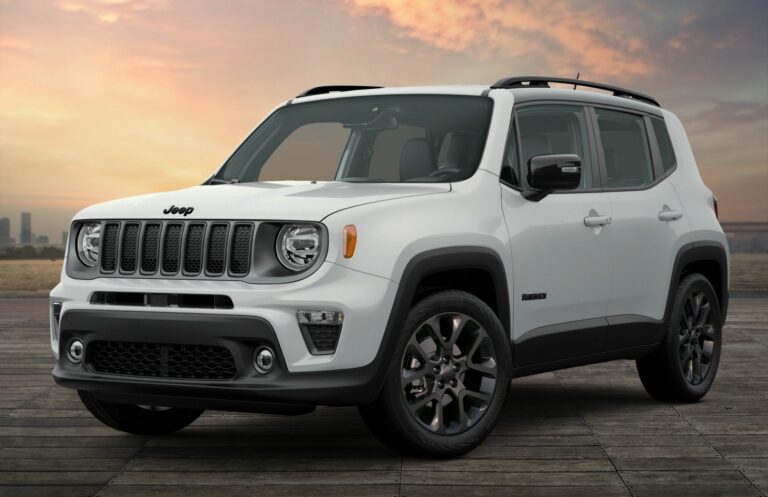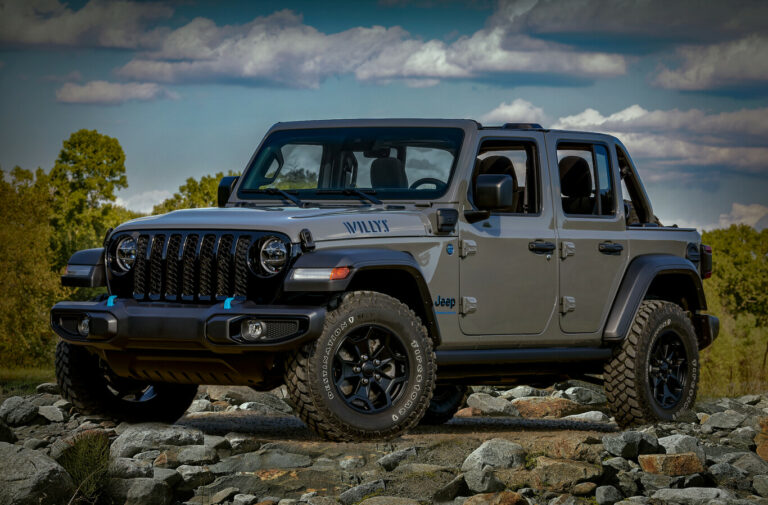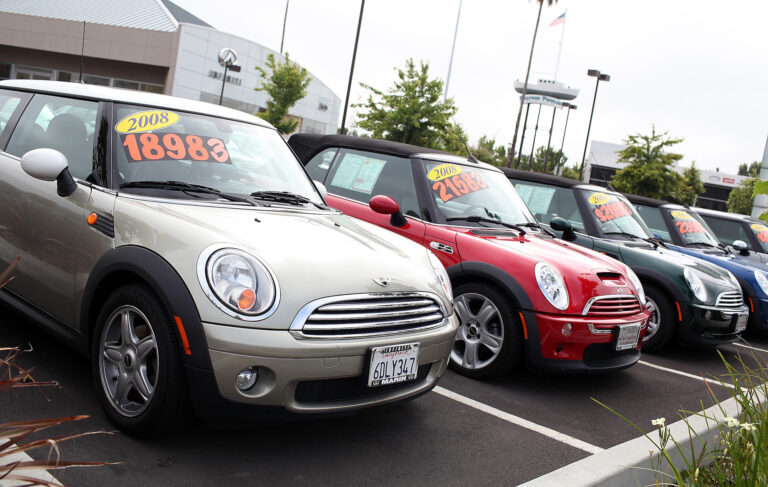Jeep Wrangler Chevy 350 For Sale: Your Ultimate Buyer’s Guide
Jeep Wrangler Chevy 350 For Sale: Your Ultimate Buyer’s Guide jeeps.truckstrend.com
The roar of a V8 engine in a nimble off-road machine – it’s a symphony that many automotive enthusiasts dream of. For decades, the Jeep Wrangler has been the quintessential platform for customization, and among the most popular and potent modifications is the engine swap, particularly with the venerable Chevrolet 350 small block. When you see a "Jeep Wrangler Chevy 350 For Sale" listing, you’re not just looking at a vehicle; you’re looking at a carefully crafted, high-performance off-road beast.
This comprehensive guide is designed for anyone considering purchasing a Jeep Wrangler that has undergone a Chevy 350 engine swap. We’ll delve into why this combination is so sought after, what to look for when buying, potential pitfalls, and how to assess its true value. Prepare to navigate the exciting world of custom-built Wranglers with confidence.
Jeep Wrangler Chevy 350 For Sale: Your Ultimate Buyer’s Guide
The Allure of the Chevy 350 Swap in a Jeep Wrangler
Why would someone go through the effort of swapping a different engine into an already capable Jeep Wrangler? The answer lies in a desire for more power, enhanced reliability, and cost-effective performance.
The factory engines in many older Jeep Wranglers, while robust for their time, often left enthusiasts wanting more, especially for serious off-roading, highway cruising, or towing. Enter the Chevrolet 350 cubic inch (5.7L) small block V8.
- Abundant Power & Torque: The Chevy 350 delivers significantly more horsepower and, crucially, much more low-end torque than most stock Jeep engines. This translates to effortless crawling over obstacles, quicker acceleration on the road, and improved towing capacity.
- Legendary Reliability: The 350 small block is renowned for its durability and longevity. Millions were produced, making them one of the most reliable and proven V8 engines ever made.
- Parts Availability & Affordability: Due to its widespread use across countless GM vehicles for decades, parts for the Chevy 350 are incredibly easy to find and are generally inexpensive. This simplifies maintenance and future upgrades.
- Compact Size: Despite being a V8, the small block 350 is relatively compact, allowing it to fit into the Wrangler’s engine bay with manageable modifications.
- Proven Track Record: The Jeep Wrangler Chevy 350 swap is not a new concept; it has been a staple in the off-road community for decades. This means there’s a wealth of knowledge, parts, and experienced mechanics available.

When a Jeep Wrangler Chevy 350 For Sale hits the market, it often represents a vehicle that has been purpose-built for enhanced performance and capability, offering a unique driving experience unmatched by factory configurations.
Key Considerations When Buying a Swapped Wrangler
Purchasing a modified vehicle, especially one with an engine swap, requires a meticulous approach. Unlike a factory vehicle, the quality of a swapped Jeep Wrangler Chevy 350 can vary wildly depending on the skill and resources of the builder. Here’s what you need to scrutinize:

1. Engine Type & Condition
Not all Chevy 350s are created equal. They range from carbureted versions to Throttle Body Injection (TBI) and more modern Vortec (TPI/MPFI) engines.
- Engine Variant: Understand which specific 350 is installed. Vortec engines (typically 1996-2000) offer better power and efficiency. Carbureted setups are simpler but might have emissions challenges.
- Mileage & History: Ask for documentation on the engine’s origin, rebuilds, or maintenance. A low-mileage crate engine is ideal.
- Signs of Wear: Listen for unusual noises (knocks, ticks), check for excessive smoke from the exhaust, and inspect for oil or coolant leaks.
![]()
2. Transmission Compatibility & Strength
The transmission must be capable of handling the increased power and torque of the 350. Common choices include:
- Automatic: TH350, 700R4, 4L60E (stronger, electronically controlled).
- Manual: SM465, NV4500 (both heavy-duty truck transmissions).
- Ensure the transmission shifts smoothly, without hesitation or slipping. Verify that the correct adapter plate was used to mate it to the transfer case.
3. Axles & Drivetrain Upgrades
A V8’s power can quickly overwhelm stock Jeep axles, especially the Dana 35 rear axle found in many Wranglers.
- Axle Upgrades: Look for upgraded axles like a Ford 8.8, Dana 44, or even Dana 60s for serious builds.
- Gearing: The differential gears should be appropriate for the tire size and V8 power (often 3.73, 4.10, or lower).
- Transfer Case: Ensure the transfer case (e.g., NP231, NP241OR) is robust enough and properly adapted.
- Driveshafts: Custom driveshafts are usually required. Check for proper length and angles to prevent vibrations.
4. Cooling System Efficiency
This is critical. A V8 produces more heat than a 4-cylinder or V6.
- Radiator: A large, high-capacity aluminum radiator is essential.
- Fans: Look for powerful electric fans (dual fans are often preferred) to ensure adequate airflow, especially at low speeds or while idling.
- Hoses & Thermostat: Ensure all components are in good condition. Overheating is a common issue with poorly executed V8 swaps.
5. Wiring & Electronics
Often the most challenging part of any swap, and where many DIY projects fail.
- Clean Wiring: Inspect the wiring harness. It should be neat, properly loomed, and professionally terminated. A spaghetti mess of wires is a major red flag.
- Functional Gauges: All dashboard gauges (speedometer, tachometer, oil pressure, water temperature, fuel) should work correctly.
- Check Engine Light (CEL): If it’s an electronically controlled engine (TBI/Vortec), ensure there are no persistent CELs, unless explicitly explained and resolved (e.g., for emissions delete in off-road vehicles).
6. Mounts & Adapters
The engine and transmission mounts, as well as the adapter plates, must be robust and professionally installed.
- Quality: Look for heavy-duty, properly welded mounts. Poorly designed mounts can lead to vibrations, misalignment, and structural failure.
7. Exhaust System
Custom exhaust routing is necessary for a V8.
- Clearance: Ensure adequate clearance around suspension, frame, and body components.
- Leaks: Check for exhaust leaks, which can indicate poor welds or damaged gaskets.
8. Suspension & Steering
The added weight of a V8 will affect the vehicle’s stance and handling.
- Springs & Shocks: Has the suspension been upgraded to compensate for the heavier engine?
- Steering: Ensure the steering system (pump, box, linkages) is robust and provides proper feel. A V8 can put more stress on power steering components.
9. Legality & Emissions
This is paramount. Regulations vary significantly by state or country.
- Emissions Testing: In some areas, passing emissions tests with a swapped engine can be difficult or impossible, especially if the engine is older than the vehicle.
- Registration: Ensure the vehicle can be legally registered in your location. Research local laws regarding engine swaps before making a purchase.
10. Overall Build Quality
This encompasses everything. Is it a professional build or a "backyard hack"?
- Attention to Detail: Look for clean welds, proper fastener torque, tidy hose routing, and thoughtful component placement.
- Rust: Check for frame rust, especially around custom mounts or welds.
What to Look For During an Inspection (Practical Advice)
When you find a Jeep Wrangler Chevy 350 For Sale, don’t just kick the tires. Follow these steps for a thorough inspection:
-
Initial Visual Inspection (Cold Start):
- Look under the hood for obvious signs of leaks (oil, coolant, power steering fluid).
- Inspect wiring – is it neatly routed and protected, or a tangled mess?
- Check custom fabrication: Are welds clean and strong, or amateurish and sloppy?
- Examine the cooling system components: Radiator size, fan setup, hose condition.
- Check for rust on the frame, body, and suspension components, especially near any custom work.
- Note the condition of tires and wheels, and whether they match the axle gearing.
-
Engine Start-Up:
- Listen for how it starts – does it crank excessively?
- Listen for unusual noises: Knocks, ticks, rattles, squeals.
- Observe exhaust smoke: Blue (oil), white (coolant), or black (rich fuel mix) are red flags. A little condensation on a cold day is normal.
- Let it idle for a while. Does it maintain a steady idle? Does the temperature gauge rise quickly or stay stable?
-
Test Drive:
- Transmission: Check all gears (forward and reverse). Does it shift smoothly or harsh? Does it slip?
- Power Delivery: Does the engine pull strong and smoothly through the RPM range?
- Steering: Is it responsive? Does it pull to one side? Any excessive play?
- Brakes: Do they feel adequate for the vehicle’s weight and power? (Often, brake upgrades are also necessary).
- Vibrations: Listen and feel for unusual vibrations, especially at different speeds. This could indicate driveline angle issues, unbalanced driveshafts, or worn U-joints.
- Gauges: Do all gauges work and provide accurate readings?
- Off-Road Test (if possible): If the seller allows, test 4WD high and low range. Listen for noises from the transfer case and axles.
-
Documentation & History:
- Ask for receipts for the engine, transmission, and any major components or professional work.
- Inquire about the history of the swap: Who did it? When? Why are they selling?
- Request maintenance records.
-
Pre-Purchase Inspection (PPI):
- Consider having a qualified mechanic, especially one familiar with engine swaps and off-road vehicles, perform a PPI. This small investment can save you from costly headaches down the road.
Types and Categories of Swapped Wranglers
When searching for a Jeep Wrangler Chevy 350 For Sale, you’ll encounter a range of builds:
- Mild Street/Trail Builds: Often focus on improved highway manners and light to moderate off-roading. May retain more stock components.
- Heavy-Duty Rock Crawlers: Built for extreme off-road use, featuring heavily upgraded axles (Dana 60s), custom suspension, roll cages, and protective armor.
- Daily Driver Capable: A well-balanced build that offers both performance for off-road adventures and reasonable comfort and reliability for daily commuting. These are often the most desirable for a wider audience.
- Generation Specific: The swap can be done on YJ (leaf spring), TJ (coil spring), and even some JK/JL Wranglers. The complexity and cost increase with newer generations due to more advanced electronics.
Pricing a Jeep Wrangler Chevy 350 For Sale
The price of a Jeep Wrangler Chevy 350 For Sale varies significantly based on numerous factors. There’s no "blue book" value for custom builds. Here’s a general guide and a sample price table:
Factors Influencing Price:
- Quality of the Swap: Professional vs. DIY, attention to detail.
- Engine Condition: Rebuilt, low mileage crate, or high mileage used.
- Transmission & Drivetrain: Upgraded components (heavy-duty transmission, stronger transfer case, upgraded axles).
- Suspension & Tires: Lift kit quality, tire size and condition.
- Additional Features: Winch, aftermarket bumpers, armor, lighting, interior upgrades.
- Cosmetic Condition: Paint, body integrity, interior wear.
- Legal & Emissions Compliance: If it’s legally registered and emissions compliant in a strict state, it adds value.
- Original Jeep’s Condition: Year, mileage, and original rust levels of the Jeep itself.
Here’s a generalized pricing table for a Jeep Wrangler Chevy 350 For Sale, assuming a clean title and functional vehicle:
| Build Quality / Condition | Engine Type / History | Drivetrain & Axle Upgrades | Suspension & Tires | Price Range (USD) | Notes |
|---|---|---|---|---|---|
| Budget/DIY Build | Used/High Mileage 350 | Stock/Weak Axles (D35) | Basic Lift/Used Tires | $10,000 – $18,000 | May require immediate work; potential wiring issues. |
| Mid-Range/Solid Driver | Rebuilt/Good Used 350 | Dana 44/Ford 8.8 Rear | 2-4" Lift/33-35" Tires | $19,000 – $30,000 | Good for general use; decent trail capability. |
| Professional/High-End | Crate/Low Mileage 350 | Dana 60s/Strong Transfer Case | 4"+ Lift/37"+ Tires | $31,000 – $50,000+ | Excellent build quality, top-tier components, ready for serious off-roading. |
Note: These are rough estimates and can vary wildly based on market demand, location, and the specific details of the build.
Potential Challenges & Solutions
Buying a swapped Jeep Wrangler Chevy 350 isn’t without its potential challenges. Being aware of them allows you to make an informed decision or plan for future fixes.
- Overheating:
- Challenge: The most common issue if the cooling system isn’t robust enough.
- Solution: Ensure a large radiator, powerful electric fans, and proper coolant flow. If buying, budget for potential cooling system upgrades.
- Drivetrain Vibrations:
- Challenge: Incorrect driveshaft angles, worn U-joints, or improper balancing can cause vibrations, especially at speed.
- Solution: Inspection during a test drive is key. Can often be corrected with shims, slip yoke eliminator (SYE), or new driveshafts.
- Wiring Nightmares:
- Challenge: A poorly wired swap can lead to intermittent electrical issues, non-functional gauges, or even safety hazards.
- Solution: Look for professional wiring. If buying a questionable one, budget for a custom wiring harness from a reputable company.
- Legal & Emissions Issues:
- Challenge: Registering or passing emissions in certain states.
- Solution: Research your local laws before buying. Some states require the engine to be the same year or newer than the vehicle, or meet specific emissions standards.
- Parts Availability for Custom Work:
- Challenge: While 350 parts are plentiful, custom fabricated parts might be harder to replace if damaged.
- Solution: Ensure the builder used common and well-documented adapter kits where possible.
Concluding Summary
A Jeep Wrangler Chevy 350 For Sale represents a unique opportunity to own a vehicle with a blend of classic Jeep ruggedness and potent V8 power. This combination offers unparalleled off-road capability, improved highway performance, and the satisfaction of driving a truly custom machine.
However, the quality of these builds varies significantly. Your due diligence is paramount. By understanding the critical components to inspect, asking the right questions, and potentially seeking professional advice, you can confidently navigate the market. With careful consideration, you can find a meticulously crafted Jeep Wrangler Chevy 350 that will provide years of exhilarating adventures, both on and off the pavement.
Frequently Asked Questions (FAQ)
Q1: Is a Jeep Wrangler Chevy 350 swap reliable?
A1: Yes, if done correctly. The Chevy 350 engine itself is known for its reliability and durability. The reliability of the entire swap depends heavily on the quality of the installation, the components used (transmission, axles, wiring, cooling), and ongoing maintenance.
Q2: How much power does a swapped Jeep Wrangler Chevy 350 have?
A2: The power output varies greatly depending on the specific 350 engine variant (carbureted, TBI, Vortec), its condition, and any modifications. Stock Chevy 350s typically produce between 180-300 horsepower and 280-350 lb-ft of torque, significantly more than most factory Jeep engines.
Q3: Are these swaps street legal?
A3: This depends entirely on your state or country’s laws. Some areas have strict emissions regulations or require the swapped engine to be the same year or newer than the vehicle. Always research your local Department of Motor Vehicles (DMV) or equivalent agency’s rules before purchasing.
Q4: Will a Chevy 350 swap fit into any Jeep Wrangler generation?
A4: While it’s most common in YJ (1987-1995) and TJ (1997-2006) Wranglers due to their simpler electronics, it has been done in JK (2007-2018) and even JL (2018-present) models. However, the complexity and cost increase significantly with newer generations due to more integrated electronic systems.
Q5: What should I budget for potential repairs after buying a swapped Jeep?
A5: It’s always wise to set aside a contingency fund, typically 10-20% of the purchase price, for any used modified vehicle. Common areas that might need attention include cooling system upgrades, driveline adjustments to eliminate vibrations, or electrical troubleshooting if the wiring isn’t top-notch.
Q6: What’s the biggest challenge with a Chevy 350 swap?
A6: Arguably, the most challenging aspects are the wiring to ensure all vehicle systems and gauges function correctly, and ensuring an adequate cooling system to prevent overheating, especially during low-speed off-roading.




